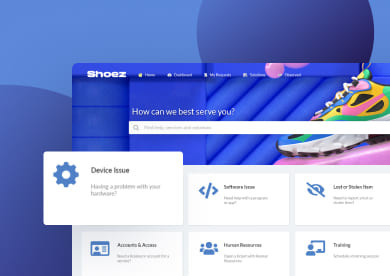Managing the varied demands of IT work—from addressing technical issues to implementing changes—requires a systematic approach. ITIL processes provide the structure you need by defining clear, organized steps for managing IT services.
ITIL organizes these processes into five stages within the service lifecycle; each stage plays a distinct role in ensuring services are planned, implemented, maintained, and refined over time.
Here, we examine ITIL processes in detail, explaining their roles in keeping IT services orderly and effective.
What are ITIL processes?
ITIL processes are structured activities that support IT Service Management by standardizing operations and improving service delivery. They help organizations manage incidents, changes, service requests, and other key functions systematically.
While ITIL 4 has introduced a more flexible, value-driven approach, ITIL v3’s well-established processes provide a deep understanding of how IT services evolve from strategic planning to ongoing refinement by breaking down each process within its respective lifecycle stage.
Exploring ITIL processes through the lens of ITIL v3’s service lifecycle provides a solid foundation for understanding how IT services are structured. ITIL v3 remains widely used in many organizations, and its five-stage approach offers a clear framework for managing IT services efficiently.
Before moving on, it's important to establish a distinction between functions and processes in ITIL. Functions, such as the Service Desk, are specialized units responsible for executing specific types of work and are often involved in multiple processes. In contrast, processes like Incident Management and Change Management are structured sets of activities designed to achieve specific objectives. While functions are essential for carrying out processes, they should not be confused with them.

ITIL processes within the service lifecycle
In this section, we’ll review the 26 ITIL v3 processes and then explore the additional management practices introduced in ITIL 4, which expand on this foundation to address modern ITSM challenges.
Service Strategy
This stage focuses on defining services, aligning them with business objectives, and managing financial and resource planning.
- Strategy Management for IT Services – Defines and maintains the organization's IT service strategy to ensure alignment with business goals.
- Service Portfolio Management – Maintains an inventory of all services, tracking their value and ensuring alignment with business needs.
- Financial Management for IT services – Handles budgeting, accounting, and financial planning for IT services.
- Business Relationship Management – Ensures IT services meet business requirements through ongoing communication and engagement.
- Demand Management – Balances service capacity with business demand to optimize resources.

Service Design
Once a strategy is in place, services must be designed effectively to meet business and user requirements.
- Service Level Management – Defines and monitors service levels to meet agreed performance targets.
- Availability Management – Ensures services remain accessible and operational based on business needs.
- Capacity Management – Plans resources and infrastructure to meet demand without over- or under-provisioning.
- IT Service Continuity Management – Develops disaster recovery and resilience strategies to maintain service availability.
- Supplier Management – Oversees contracts and relationships with external vendors supporting IT services.
- Information Security Management – Protects data and IT services against security threats.
- Design Coordination – Ensures service designs align with business objectives and IT capabilities.
- Information Security Management – Protects IT services against security threats and ensures compliance.

Service Transition
This stage manages the transition of new or modified services into production while minimizing risk and disruption.
- Transition Planning and Support – Coordinates service transitions to ensure smooth deployment.
- Change Management – Evaluates, approves, and implements changes while minimizing disruptions.
- Change Evaluation – Assesses major changes to determine their impact before implementation.
- Release and Deployment Management – Oversees the controlled rollout of new or updated services.
- Service Asset and Configuration Management – Tracks IT assets and their relationships to maintain accurate records.
- Service Validation and Testing – Ensures new or modified services meet business and technical requirements.
- Knowledge Management – Maintains documentation and best practices for decision-making and efficiency.

Service Operation
Daily Service Management happens here, focusing on delivering and maintaining IT services.
- Access Management – Controls and secures user access to IT services and resources.
- Request fulfillment – Handles user requests such as access permissions or software installations.
- Event Management – Monitors IT systems and alerts teams about potential service-impacting issues.
- Incident Management – Resolves IT issues quickly to minimize service disruption.
- Problem Management – Investigates root causes of recurring incidents to prevent future disruptions.

Continual Service Improvement
Ongoing refinement and evaluation of IT services help maintain efficiency and relevance.
- Continual Service Improvement (CSI) – Assesses performance and identifies areas for optimization and refinement.
Additional ITIL 4 management practices
ITIL 4 expands on ITIL v3 processes by introducing additional management practices that address modern ITSM challenges. While ITIL v3 focused heavily on structured processes within the service lifecycle, ITIL 4 takes a more flexible approach, emphasizing value creation, adaptability, and collaboration across IT and business teams.
"The main difference between ITIL 3 and ITIL 4 is that in ITIL 4 we are in a conceptual model. Up to ITIL v3 you are in a numerative model, that must meet the success of ITIL because people hate thinking, they want ready-made solutions. They want ‘Okay I take this book I open it, I know what I have to do to manage an incident’. (...) They are not processes anymore, they (ITIL 4) are practices. You have to think about the tools that you can use, about the level of maturity of your users and so on"
David Billouz
ITIL Master
Episode 29 of Ticket Volume
Instead of prescribing a rigid sequence of processes, ITIL 4 introduces the Service Value System (SVS), which encourages organizations to take a more holistic and iterative approach to Service Management. ITIL 4 also incorporates Agile, DevOps, and Lean principles, making it more suitable for modern, fast-paced IT environments.
- Architecture Management – Develops and maintains IT architecture to align with business goals.
- Service Catalog Management – Maintains and controls the service catalog to provide accurate service information.
- Workforce and Talent Management – Manages skills and staffing to support IT service delivery.
- Monitoring and Event Management – Expands on event management to improve proactive issue resolution.
- Deployment Management – Enhances release and deployment management with a stronger focus on automation.
- Incident Management (ITIL 4) – Introduces a more agile approach to incident handling.
- Service Request Management – Separates request handling from incident management for better efficiency.
- Continual improvement – Replaces CSI with a broader approach to long-term service evolution.
- Organizational Change Management – Helps organizations manage cultural and process changes in IT service delivery.
- Project Management – Aligns IT service projects with business initiatives.

Final words
Understanding ITIL processes gives you a structured look at how to manage everyday IT tasks with clarity.
As you explore each process in the article, it becomes evident that these practices offer more than just a checklist—they provide a framework for organizing work, addressing issues promptly, and continuously refining service delivery.
We hope this guide has made the topic more accessible and given you a solid foundation for implementing or reviewing your IT service practices.














.jpg?upsize=true&upscale=true&width=780&height=205&name=ITIL%20Foundation%20Exam%20(2).jpg)
